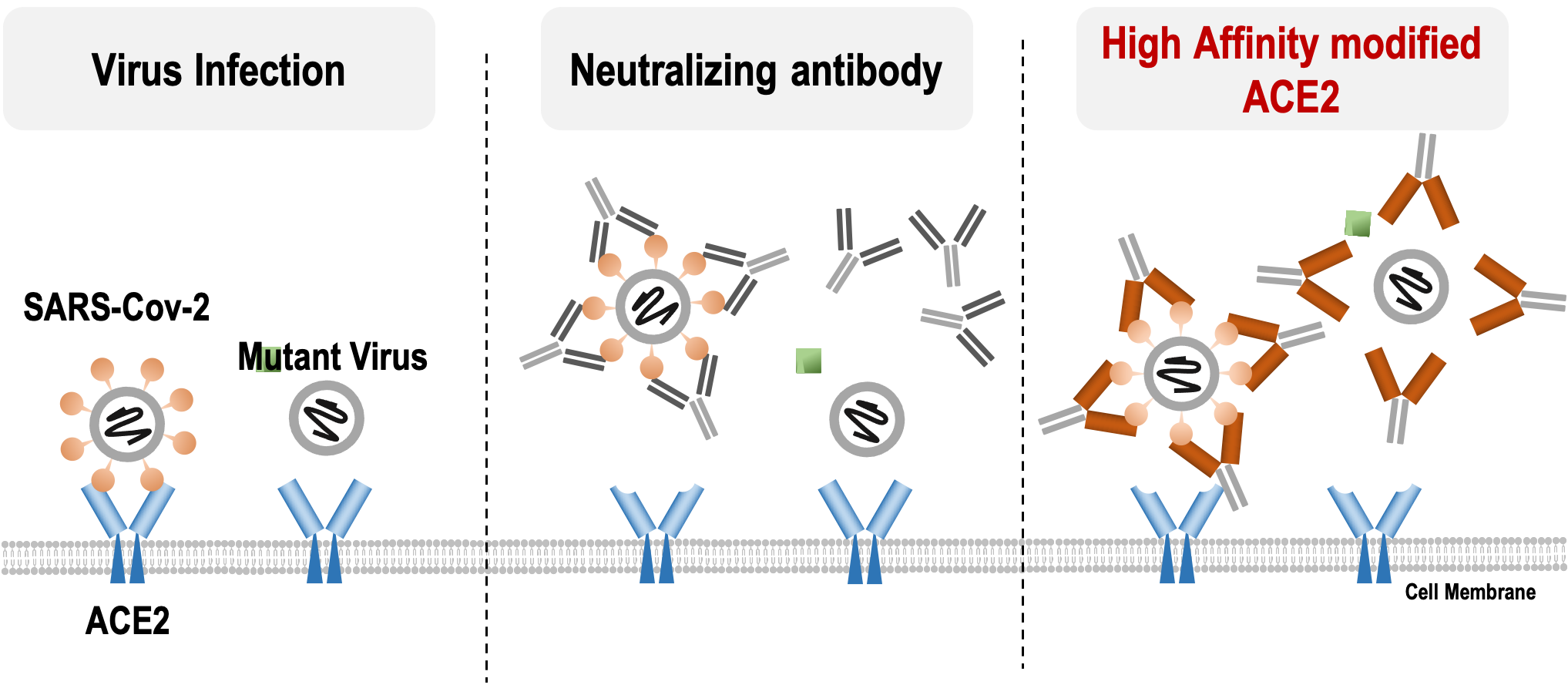Engineered ACE2 receptor therapy overcomes mutational escape of SARS-CoV-2 (Okamoto Lab in Nat. Commun.)
SARS-CoV-2 has mutated during the global pandemic leading to viral adaptation to medications and vaccinations. Here we describe an engineered human virus receptor, ACE2, by mutagenesis and screening for binding to the receptor binding domain (RBD). Three cycles of random mutagenesis and cell sorting achieved sub-nanomolar affinity to RBD. Our structural data show that the enhanced affinity comes from better hydrophobic packing and hydrogen-bonding geometry at the interface. Additional disulfide mutations caused the fixing of a closed ACE2 conformation to avoid off-target effects of protease activity, and also improved structural stability. Our engineered ACE2 neutralized SARS-CoV-2 at a 100-fold lower concentration than wild type; we also report that no escape mutants emerged in the co-incubation after 15 passages. Therapeutic administration of engineered ACE2 protected hamsters from SARS-CoV-2 infection, decreased lung virus titers and pathology. Our results provide evidence of a therapeutic potential of engineered ACE2.
This article was published in Nature Communications on June24, 2021.
Title: Engineered ACE2 receptor therapy overcomes mutational escape of SARS-CoV-2
Authors: Yusuke Higuchi, Tatsuya Suzuki, Takao Arimori, Nariko Ikemura, Emiko Mihara, Yuhei Kirita, Eriko Ohgitani, Osam Mazda, Daisuke Motooka, Shota Nakamura, Yusuke Sakai, Yumi Itoh, Fuminori Sugihara, Yoshiharu Matsuura, Satoaki Matoba, Toru Okamoto*, Junichi Takagi*, Atsushi Hoshino*
*Corresponding Authors
Links
- Home
- Achievement
- Research Activities
- Engineered ACE2 receptor therapy overcomes mutational escape of SARS-CoV-2 (Okamoto Lab in Nat. Commun.)








